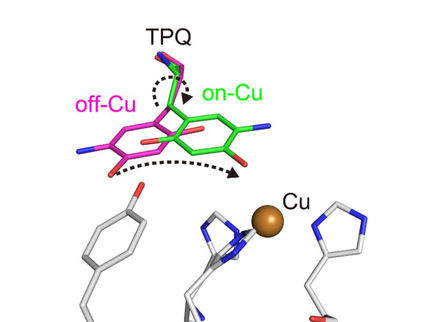New images of a calcium-shuttling molecule that has been linked to aggressive cancer
Scientists have captured new images of a calcium-shuttling molecule that has been linked to aggressive cancers. The three-dimensional structure could help researchers develop novel therapies and diagnostic tools for diseases that are caused by a malfunction in calcium adsorption.
Alexander Sobolevsky's lab at Columbia University Medical Center is studying a family of proteins called "Transient receptor potential (TRP)" channels. These proteins line surfaces inside the body, such as the intestine, and form pores that help calcium cross a dense barrier of lipid and protein called the membrane to reach the interior of the cell.
"Scientists have found that a TRP channel variant, called TRPV6, is present in excess amounts in the tumor cells of some cancer patients," says senior author Alexander Sobolevsky, PhD, who is an assistant professor in the Department of Biochemistry and Molecular Biophysics at Columbia University Medical Center. "And patients who have higher quantities of TRPV6 seem to have a more aggressive form of the disease."
In order to uncover how these channels guide calcium into the cell, and how disease can occur when this process becomes unregulated, Sobolevsky's lab used a technique called X-ray crystallography. This process involved growing crystals of TRPV6 and exposing them to an X-ray beam. The scientists then used the diffraction pattern produced by the X-rays to map out a 3D model of the protein.
The structure--which represents a single frozen state of the channel--reveals that the surface of TRPV6 pore is lined with negative charges. This configuration helps attract calcium ions, which are positively charged. The calcium ions are then shuffled from location to location inside of the pore, up to three molecules at a time, as they pass through into the cell.
"In future, we could use this model to design drugs that can target some types of tumor cells by plugging up TRP channels on their surfaces," says Sobolevsky.
Ordinarily the calcium ingested from our diet is used by the body to regulate a variety of processes including the beating of the heart, muscle contractions, and brain signaling. In addition to various forms of cancer, altered calcium uptake and TRPV6 expression has also been linked to Crohn's and kidney stone diseases in mouse models. Further research needs to be done to determine the extent that alteration in TRP channel activity leads to disease progression.
Original publication
Other news from the department science

Get the life science industry in your inbox
By submitting this form you agree that LUMITOS AG will send you the newsletter(s) selected above by email. Your data will not be passed on to third parties. Your data will be stored and processed in accordance with our data protection regulations. LUMITOS may contact you by email for the purpose of advertising or market and opinion surveys. You can revoke your consent at any time without giving reasons to LUMITOS AG, Ernst-Augustin-Str. 2, 12489 Berlin, Germany or by e-mail at revoke@lumitos.com with effect for the future. In addition, each email contains a link to unsubscribe from the corresponding newsletter.


















































